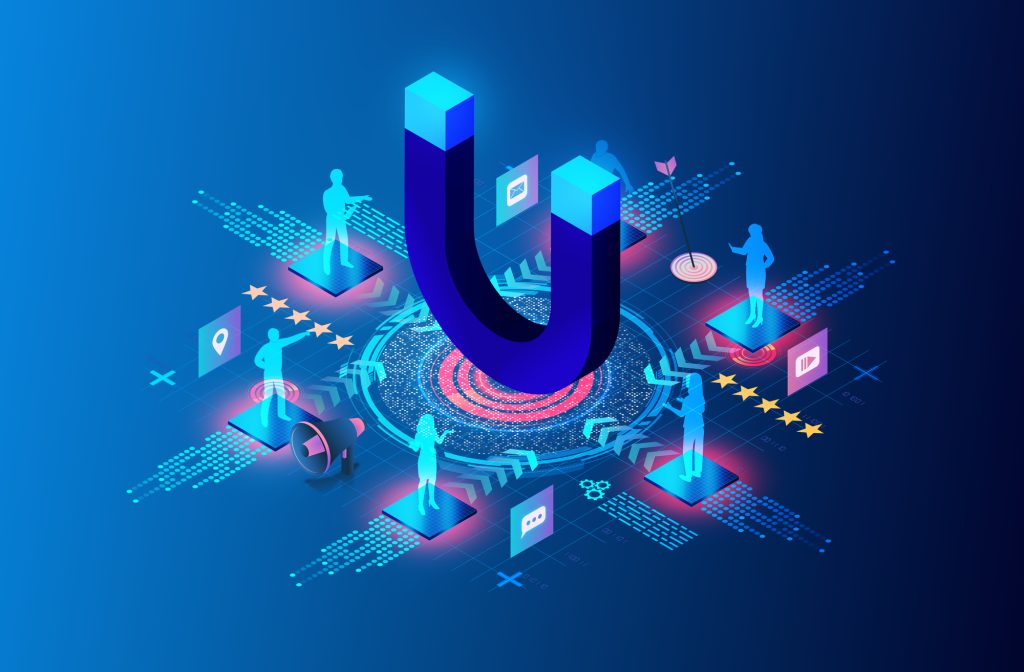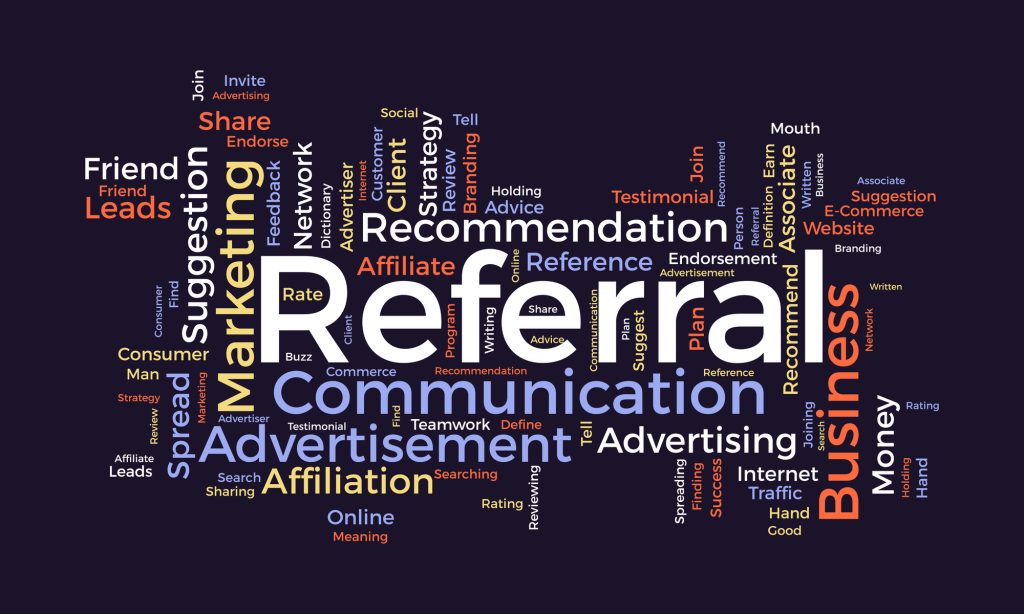In the rapidly evolving digital landscape, mastering social media engagement is not just a luxury – it’s a necessity. Whether you’re a budding entrepreneur, a small business owner, or just starting your journey in digital marketing, understanding how to effectively engage your audience on social media can be a game changer. Let’s dive into two critical strategies: leveraging social media polls and interactive content, and maximizing reach with social media collaboration and partnerships.
Leveraging Social Media Polls and Interactive Content
Polls and interactive content on social media aren’t just fun—they’re powerful tools for engagement. Why? Because they invite your audience to participate, not just spectate. Imagine this: a simple poll on Instagram asking your followers which product color they prefer. Sounds simple, right? But here’s the magic—it’s not just a poll. It’s a conversation starter, a way to make your audience feel heard, and a goldmine of customer insights.
Stats Speak Louder
According to a study by BuzzSumo, posts with questions generate 23% more engagement. When you make your content interactive, you’re not just posting; you’re communicating. And communication is the cornerstone of any successful relationship.
Maximizing Reach with Social Media Collaboration and Partnerships
When it comes to amplifying your reach, collaboration is key. Think of it as a multiplier effect. By partnering with influencers, industry experts, or even other brands, you’re not just tapping into your audience but theirs as well. It’s like hosting a party and having your guests bring their friends along.
Real-World Success Story
Take the example of GoPro and Red Bull’s collaboration. By partnering together, they created captivating content that resonated with both of their audiences, leading to a wider reach and increased engagement. It’s not just about sharing audiences; it’s about sharing values, stories, and experiences.
Innovating with Influencer and Blogger Outreach
In today’s digital world, reaching out to influencers and bloggers can be a goldmine for your marketing strategy, especially if you’re just starting out. Let’s explore how you can craft impactful campaigns with micro-influencers and engage local bloggers for niche market penetration.
Crafting Impactful Collaborative Campaigns with Micro-Influencers

Micro-Influencers: The Unsung Heroes of Marketing
You might wonder, why micro-influencers? They’re like the neighborhood’s favorite, not as famous as celebrities but definitely more relatable and trusted by their followers. Their superpower? Authenticity.
- Real Impact: According to a report by Markerly, micro-influencers, with followers ranging from 1,000 to 10,000, have higher engagement rates. They create a sense of community and trust that big celebrities can’t always match.
- Cost-Effective Strategy: Collaborating with them is also budget-friendly and often results in more genuine endorsements.
Imagine a local food blogger with 5,000 followers raving about your artisanal coffee shop. Their followers, who trust their taste, are likely to stop by. That’s the kind of targeted marketing that can change the game for small businesses.
Engaging Local Bloggers for Niche Market Penetration
Next up, let’s talk about local bloggers. These are the storytellers of your community, the ones who know the ins and outs of the local market.
- Why Local? They have a concentrated audience, perfect for businesses targeting specific locales. Their word can often carry more weight than a generic review or advertisement.
- Building Relationships: Engage with them. Comment on their blogs, invite them to your events, or even propose a guest post on their blog. It’s about building a relationship, not just a one-time deal.
A Case in Point
Take, for example, a local fashion blogger in Miami collaborating with a small boutique. Their post about the boutique’s unique summer collection could drive their fashion-forward followers right to the store’s Instagram page, and eventually, to the checkout counter. Now that you grasp the mechanics of this strategy, the next step is to identify an influencer marketing platform through which you can connect with influencers.
Elevating Content Marketing and SEO Synergy
Welcome to the crossroads of creativity and technicality in digital marketing. If you’re new to this, don’t worry; we’re about to break down how integrating SEO with storytelling in blog content and utilizing videos and podcasts can significantly boost your SEO efforts.
Integrating SEO with Storytelling in Blog Content
Ever heard of the saying, “Content is King”? Well, it’s true, but only if the king is wisely counseled by SEO. It’s not just about stuffing keywords; it’s about weaving them into a story that captivates and engages.
- Engagement Is Key: According to Moz, articles that engage readers tend to rank higher on search engines. So, how do you engage? Through stories that resonate with your audience while strategically using keywords.
- The Right Blend: Mix your targeted keywords with compelling narratives. For instance, if you’re selling eco-friendly products, tell a story about the impact of sustainable living, incorporating keywords naturally.
Utilizing Video and Podcasts for Enhanced SEO Benefits
Now, let’s turn the spotlight on videos and podcasts. Did you know that according to Cisco, by 2022, online videos will make up more than 82% of all consumer internet traffic? That’s huge!
- Video Content: Videos keep users on your page longer, sending positive signals to search engines. Embedding videos in your blog posts not only makes them more engaging but also improves your search rankings. Additionally, you can incorporate multistreaming capabilities to simultaneously stream your videos on different platforms and maximize your reach.
- Podcasts: They’re the new talk of the town. When you know how to transcribe an interview in order to turn your podcasts into written content and posting them on your blog, you’re hitting two birds with one stone – providing content for auditory and visual learners, and loading up on SEO-friendly text.
A Real-World Example
Consider ‘Moz’s Whiteboard Friday’ – a perfect blend of video and informative content. Not only do they provide valuable SEO tips through videos, but their transcribed posts beneath each video make it a double whammy for SEO.
Advanced Paid Advertising Strategies
As we navigate the dynamic world of digital marketing, let’s focus on some advanced tactics in the realm of paid advertising. If you’re new to this, don’t worry; we’re going to unpack this together. Let’s explore the potential of lesser-known social platforms for targeted ads and dive into the art of optimizing Google Ads with A/B testing and analytics.
Exploring Lesser-Known Social Platforms for Targeted Ads
When it comes to paid advertising, the usual suspects like Facebook and Instagram immediately come to mind. But have you considered the road less traveled? Platforms like TikTok, Pinterest, or even LinkedIn can offer a treasure trove of opportunities, especially for niche markets.
- Why Go Niche? According to a Sprout Social report, niche platforms often boast higher engagement rates due to their tailored communities.
- Case in Point: Take Pinterest, for example. It’s a haven for DIY enthusiasts, home decorators, and fashion aficionados. By targeting ads on such platforms, you can tap into a highly engaged audience that’s already interested in your niche.
Optimizing Google Ads with A/B Testing and Analytics
Now, let’s talk about Google Ads. It’s not just about setting up an ad and hoping for the best; it’s about continuous optimization. Enter A/B testing and analytics.
- The Power of A/B Testing: This is where you create two versions of your ad (A and B) and test them to see which performs better. Even a small change in the ad copy or image can significantly impact click-through rates.
- Analytics Are Your Friend: Google Analytics can offer insightful data about your ads’ performance. According to Google, advertisers who implement Google Analytics see an average increase in conversions of about 20%.
Real-World Example
Imagine you’re selling eco-friendly yoga mats. An A/B test could involve using two different ad copies – one focusing on the eco-friendly aspect and the other on the durability of the mat. The results could give you surprising insights into what resonates more with your audience.
Community Building and Engagement Techniques

In the ever-evolving world of online marketing, creating a strong community around your brand is key to lasting success. For those of you just dipping your toes into this world, let’s explore some effective strategies to build and engage your online community. We’ll focus on hosting webinars and online workshops for interactive experiences, and establishing online forums or Q&A sessions for direct engagement with your audience.
Hosting Webinars and Online Workshops for Community Interaction
Webinars and online workshops are not just about disseminating information; they’re about creating an interactive learning environment. It’s where your audience doesn’t just listen but actively participates.
- Why Webinars? According to the Content Marketing Institute, webinars are one of the most effective content marketing strategies, with over 58% of marketers using them.
- Engagement through Education: By educating your audience about a topic related to your product or service, you’re not only providing value but also building trust and authority.
Tip: Make your webinars interactive with live polls, Q&A sessions, and even small assessments with personalized feedback. This keeps the audience engaged and makes the experience more memorable..
Establishing Online Forums or Q&A Sessions for Direct Engagement
Online forums and Q&A sessions are like the digital equivalent of town hall meetings. They provide a platform for your audience to voice their opinions, ask questions, and engage directly with your brand.
- Direct Engagement: These platforms offer a direct line of communication between you and your audience. It’s a space where they can get their queries addressed, share feedback, and feel heard.
- Building a Community: Forums and Q&A sessions help in building a community around shared interests or topics related to your brand. It’s about nurturing a sense of belonging among your audience.
Example: Consider how Reddit AMA (Ask Me Anything) sessions have become popular. They’re not just Q&A sessions; they’re a way for personalities and brands to connect authentically with their audience.
Leveraging Analytics for Traffic Insights
Navigating the digital marketing landscape can be like trying to find your way through a maze. But fear not! Analytics is your trusty compass, guiding your steps to make informed decisions. Especially if you’re new to this, understanding how to use analytics to refine your content strategy and tailor user experiences is crucial. Let’s break this down.
Using Analytics to Refine Content Strategy
- Understanding Your Audience: Analytics tools can tell you a lot about your audience’s preferences. What are they reading? How long are they staying on a page? This data is invaluable in shaping your content to meet their interests.
- Identifying Popular Content: Look at your most visited pages. If a blog post about “Eco-Friendly Gardening Tips” is getting a lot of traffic, it’s a sign. Maybe your audience is into sustainable living and gardening is a great way to tap into that. Time to dig deeper into that topic, right?
Real-Life Example: Ever heard of Buzzfeed? They’re masters at this. By analyzing which quizzes and articles get the most attention, they continually refine their content to keep their audience coming back for more.
Tailoring User Experience Based on Traffic Source Analysis
- Where Are They Coming From? Analyze whether your visitors are coming from social media, search engines, or email links. This can tell you a lot about what they expect to find.
- Tailoring Experiences: If most of your traffic is from LinkedIn, your audience might be looking for more professional content compared to visitors from Instagram.
Stat Alert: According to a Google Analytics benchmark, websites can see a bounce rate ranging from 26% to 70%, depending on the industry. By understanding where your traffic is coming from and what they’re looking for, you can optimize your site to lower that bounce rate.
Innovative SEO Tactics for 2024
As the digital landscape continues to evolve, so does the world of SEO. In 2024, it’s all about staying ahead of the curve with innovative strategies. If you’re just starting out, don’t worry – I’m here to guide you through some of the latest tactics in SEO, focusing on voice search optimization and local SEO for geo-targeted traffic.
Implementing Voice Search Optimization Strategies
- Speak the Language of Voice Search: With the increasing use of digital assistants like Alexa and Siri, optimizing for voice search is essential. This means focusing on natural, conversational language and long-tail keywords. For instance, instead of targeting “best coffee shops,” optimize for “where’s the best coffee shop near me?”
- Local and Informative Wins the Race: Voice search queries are often local and specific. Make sure your content answers the ‘Who’, ‘What’, ‘When’, ‘Where’, and ‘How’ questions.
Did You Know? According to a report by PwC, 71% of respondents prefer to use their voice assistant to search for something rather than physically typing their queries.
Capitalizing on Local SEO for Geo-targeted Traffic
- The Power of Local Listings: Ensure your business is listed on Google My Business, Bing Places, and other local directories. Accurate and consistent information across these platforms is key.
- Engage Locally: Local SEO isn’t just about being found; it’s about being relevant. Engage with local events and communities and reflect this in your content.
A Real-World Example: A small bakery in Boston could optimize its website for local searches by including terms like “Fresh croissants in Boston” or “Best bakery in downtown Boston.” This targeted approach helps attract an audience looking exactly for what they offer in their vicinity. To enhance your local SEO strategy, consider incorporating effective local SEO link building strategies. Building relevant links from local sources can significantly boost your business’s online visibility within your community.
Email Marketing and Lead Nurturing
In the digital marketing toolbox, email marketing is like the trusty hammer that’s been around for ages, yet its effectiveness remains unchallenged. For beginners, understanding how to leverage email marketing for personalized campaigns and automated sequences is crucial. Let’s break this down into manageable chunks.
Crafting Personalized Email Campaigns for Different Audience Segments
- Know Your Audience: Segment your email list based on demographics, purchase history, or engagement levels. This isn’t just categorizing; it’s about understanding the unique preferences of each segment.
- Tailor Your Messages: Personalized emails aren’t just about adding the recipient’s name. It’s about crafting content that resonates with each segment’s interests and needs.
Stat to Ponder: According to Campaign Monitor, marketers who use segmented campaigns note as much as a 760% increase in revenue. That’s not just impressive; it’s transformative!
Using Automated Email Sequences for Consistent Engagement
- Set It, but Don’t Forget It: Automated email sequences allow you to maintain consistent communication with your audience. Think welcome emails, follow-ups post-purchase, or regular newsletters.
- Engagement Over Time: These sequences nurture your leads over time, building a relationship rather than pushing for a one-time sale.
Real-Life Application: Imagine an online bookstore. A customer buys a thriller novel. An automated email sequence can follow up with similar book recommendations, reviews from other readers, or even an exclusive interview with the author.
Enhancing User Experience for Better Retention
In the digital world, first impressions are vital, and user experience (UX) is the key to making them last. If you’re just starting out in the world of digital marketing, understanding how to optimize your website for speed and mobile responsiveness, and creating interactive content is crucial. Let’s dive in!
Website Optimization for Speed and Mobile Responsiveness
- Speed Matters: A slow-loading website can be a major turn-off for visitors. According to Google, as page load time goes from 1 to 3 seconds, the probability of bounce increases by 32%. That’s a huge chunk of potential customers lost just because of a few extra seconds.
- Mobile-Friendly Is a Must: With over 50% of global website traffic coming from mobile devices, having a mobile-responsive website isn’t just nice to have; it’s a necessity.
Quick Tip: Regularly test your website’s speed and mobile responsiveness using tools like Google PageSpeed Insights. It’s not just about checking boxes; it’s about providing a seamless experience.
Creating Interactive and Visually Engaging Content
- The Power of Visuals: Incorporate high-quality images, infographics, and videos into your content. Visuals are not just eye candy; they can significantly increase the time visitors spend on your site.
- Interactive Elements: Quizzes, polls, and interactive infographics enhanced by an AI Quiz Maker, can turn passive browsing into an engaging experience.
A Case in Point: BuzzFeed’s quizzes are a great example. They’re not just fun; they’re also highly shareable, keeping users engaged and coming back for more.
Utilizing Data-Driven Decision Making
Welcome to the world of data-driven decision making, where every choice is backed by solid evidence, not just gut feelings. For beginners, this might sound a bit daunting, but don’t worry – I’m here to walk you through it. We’ll focus on two key strategies: conducting competitor analysis for strategic positioning and implementing continuous A/B testing for website optimization.
Conducting Competitor Analysis for Strategic Positioning
- Understanding Your Niche: It’s crucial to know what your competitors are doing. What strategies are they using? What kind of content resonates with their audience? Tools like SEMrush or Ahrefs can provide invaluable insights into their SEO strategies, keyword usage, and content performance.
- Filling the Gaps: Identify areas where your competitors are lacking. Can you offer something unique or improve upon what they’re doing?
Remember: Knowledge is power. According to a report by Crayon, companies that regularly conduct competitor analysis are more likely to launch successful products.
Implementing Continuous A/B Testing for Website Optimization
- Test, Analyze, Repeat: Continuous A/B testing allows you to compare different versions of your website to see which performs better. This could be anything from the color of your call-to-action button to the layout of your product pages.
- Making Informed Changes: Use tools like Google Optimize to conduct these tests. By relying on actual user data, you make changes that are likely to improve user experience and conversion rates.
Did You Know? Amazon is a prime example of A/B testing done right. They constantly test different elements of their website, leading to incremental improvements that significantly boost user experience and sales.
Harnessing the Power of Referral Marketing

Dive into the world of referral marketing, a powerful tool often overlooked in the digital marketing toolkit. Especially if you’re new to this, understanding how to launch effective referral programs and leverage customer testimonials can significantly boost your brand’s credibility and reach. Let’s explore how.
Implementing Effective Referral Programs to Encourage Word-of-Mouth
- Incentivize Sharing: The key to a successful referral program is offering incentives that excite your customers. Whether it’s discounts, free products, or exclusive access to new releases, make sure it’s something they can’t resist.
- Easy to Share: Ensure your referral process is straightforward. The easier it is to share, the more likely they will do it.
Did You Know? Dropbox’s referral program, offering extra storage space for both the referrer and referee, increased their signups by 60%, according to a case study by ShareSomeFriends.
Leveraging Customer Testimonials and Case Studies to Build Trust
- Showcase Success Stories: Customer testimonials and case studies are incredibly powerful in building trust. They provide potential customers with real-life examples of how your product or service has helped others.
- Diverse Voices: Include a range of testimonials from various customer segments to appeal to a broader audience.
A Tip: Video testimonials can be particularly effective. According to Wyzowl, 96% of people say they’ve watched an explainer video to learn more about a product or service.
Exploring Emerging Trends in Digital Marketing
As we continue our journey through the dynamic world of digital marketing, it’s crucial to stay abreast of the latest trends. If you’re new to this space, buckle up as we explore the fascinating realms of Augmented Reality (AR), Virtual Reality (VR), and the evolving landscape of voice search and AI-driven content.
Capitalizing on Augmented Reality (AR) and Virtual Reality (VR) for Interactive Marketing
- AR and VR: The Game Changers: These technologies are revolutionizing the way brands interact with consumers. AR and VR offer immersive experiences, turning passive viewers into active participants.
- Real-World Applications: For example, IKEA’s AR app allows customers to visualize how furniture would look in their homes before making a purchase.
Stat Alert: According to Statista, the AR and VR market is expected to reach $209.2 billion by 2022. This shows the massive potential for brands to create unique, engaging experiences for their customers.
Adapting to the Evolving Landscape of Voice Search and AI-Driven Content
- Voice Search Optimization: With the rise of smart speakers and voice assistants, optimizing content for voice search is becoming increasingly important. This involves focusing on natural language and question-based queries.
- AI-Driven Personalization: AI technology enables the delivery of personalized content to users. It can analyze user behavior and preferences to serve tailored content, enhancing the user experience. Furthermore, improving generated content with an AI humanizing tool can lead enhanced reader engagement and improved search engine rankings.
An Example to Consider: Think about Spotify’s use of AI to recommend music based on listening habits. This kind of personalization keeps users engaged and improves overall satisfaction.

